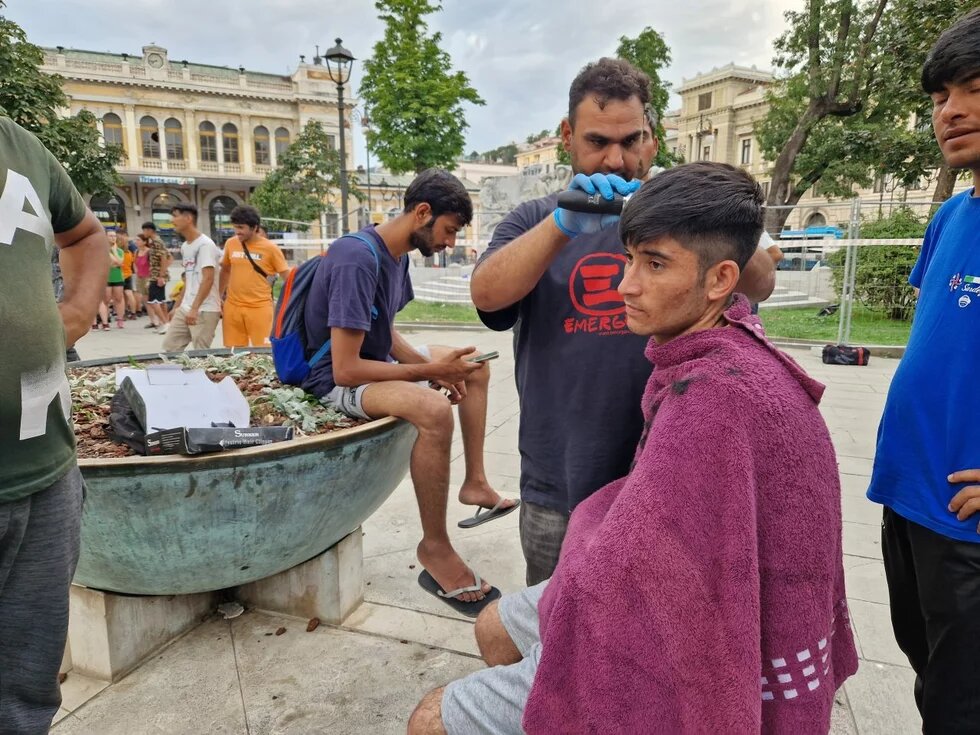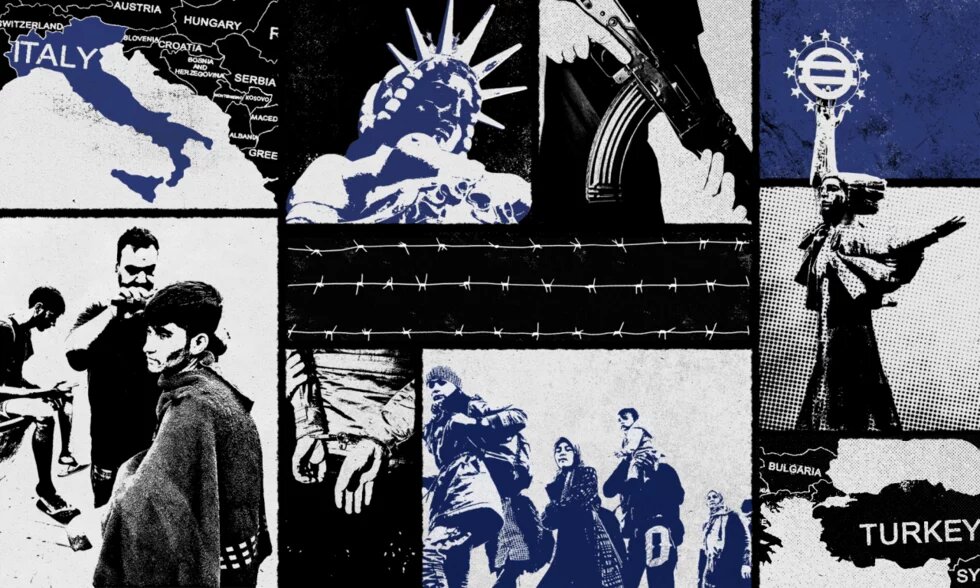
Authorities might tout ever higher arrest numbers but experts say the impact on increasingly sophisticated smuggling networks is minimal, as shown in the speed by which refugees and migrants now travel from Istanbul to Trieste.

The speed. That’s what Giulio Zeriali says has changed in the time he’s been providing support for migrants and refugees arriving in the port city of Trieste in northern Italy. Now, he said, “the route is really fast; it takes a month from Istanbul to Trieste”.
And experts believe they know why.
Despite authorities along the route touting ever higher numbers of smuggling arrests, those following the so-called Balkan Route over the past several years say smugglers are stealing a march.
“In the last years we have seen more sophistication in the work of smuggling networks,” said Dardan Kocani, a Kosovo-based researcher at the Global Initiative against Transnational Organised Crime, GI-TOC.
“For example, they started using encrypted communications, and they have more established networks between countries.”
Roughly 19,000 migrants and refugees arrived in Italy via the Balkan Route last year, according to preliminary data collated by the Italian Consortium of Solidarity, ICS, a Trieste-based rights organisation. That’s more than in 2022, when some 13,000 were registered.
“The effect of investigations into smuggling is minimal,” said ICS head Gianfranco Schiavone.
“In Trieste, there is a proliferation of political statements claiming ‘every day we get a smuggler’. This is utter nonsense,” he told BIRN. “The macro phenomenon is not only unaffected, it is becoming more and more structured.”
Guarding territory
Addressing a panel in Zagreb in December, almost a year after Croatia joined Europe’s ostensibly border-free Schengen area, Croatian Interior Minister Davor Bozinovic touted an 80 per cent rise in the number of smugglers arrested by Croatian police in 2023 compared to the year before, to almost 1,700.
Even in 2022, 15 per cent of the 12,000 individuals who passed through the Croatian prison system were involved in cases concerning human trafficking, the Croatian daily Vecernji List reported in late January.
Yet the effect has been minimal, with smuggling operations only growing in sophistication in answer to growing demand from migrants and refugees forced into the hands of smugglers by border fences and police violence.
This is most visible in Serbia, where BIRN reported in September last year on the territorial control over border areas wielded by Afghan and Moroccan smuggling gangs armed with automatic rifles and tip-offs from police officers on their payroll.
Such gangs have clashed repeatedly, sometimes fatally, in another sign of how brazenly they defend demarcated territory.
“You can see this especially in Serbia, but also in other countries, for example in Kosovo,” said Kocani. “They don’t have these clashes involving locals; it’s mainly between themselves because of control of the territory.”
Likewise, said Kocani, where locals were once the main footsoldiers, more and more migrants and refugees have moved into smuggling.
This is particularly visible in Bulgaria, said Tihomir Bezlov, a researcher at the Sofia-based think-tank Centre for the Study of Democracy.
“Until 2018 the low-level smugglers were generally Bulgarian criminals mostly, but also regular Bulgarians looking to make some extra money,” he told BIRN. “Now it’s mainly foreigners organised through social networks.”
Most of these foreigners are Syrians, Afghans and Moroccans who struggled to move beyond Bulgaria, as well as Serbs and Montenegrins, said Bezlov’s colleague, Anas Rusev.
“Some applied for asylum but the court rejected their applications and they ended up undocumented and without money to continue their journey,” Rusev said.
EU policy backfiring
While EU states have thrown money at border policing, rights organisations say the result has simply been to drive migrants and refugees into the arms of smuggling gangs.
“The only way to combat it [people smuggling] is to advocate for some kind of legal chance of entering the European borders,” said Iliana Savova, programme director at the Bulgarian Helsinki Committee in Sofia.
By beefing up borders, the EU is simply “adding more incentives for the traffickers and smugglers to increase their profit”, Savova told BIRN.
“All the measures to fully close the borders that the European Union is introducing are producing just one result: creating bigger income for the smugglers and traffickers.”
In 2021, GI-TOC estimated the value of the people-smuggling market in the Balkans at more than 50 million euros a year.
Another problem, said Kocani, is that none of the countries on the Balkan Route have prioritised the fight against smugglers.
It is “mentioned in policy documents, in minutes from meetings and in forums, but in practice [...] there is a low number of investigations, prosecution and convictions of smugglers,” he said.
Rusev warned that by failing to give migrants a better path to legality, Europe is not only fuelling the smuggling industry but driving recruitment too.
“If you leave them undocumented these people cannot access the labour market, they can’t have legal accommodation, they can’t have access to health services,” he said. “They will most probably go to the same criminal organisation [that brought them to Europe] to work with them.”
Providing a better path “will not eradicate smuggling”, said Savova, “but it will really drastically reduce it”.
“This is the only way in which the European Union could have any control over the smuggling channels and all of this irregular migration.”
This article was first published on 5 February 2024 on Balkan Insight.
It has been produced with the financial support of the Heinrich-Böll-Stiftung Thessaloniki.
Its content is the sole responsibility of the author and does not represent the Foundation’s views and opinions.
